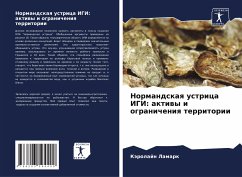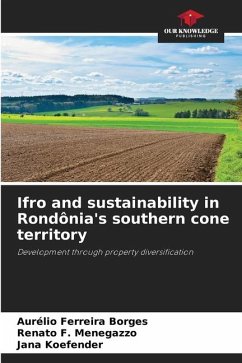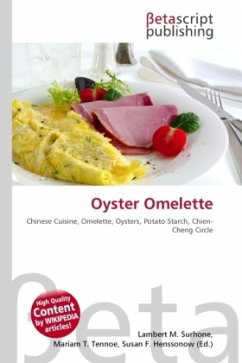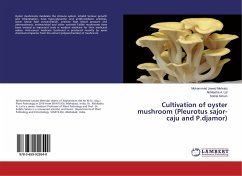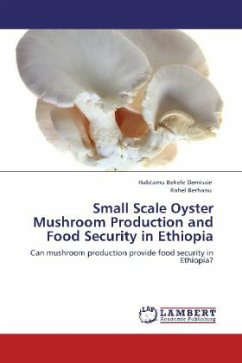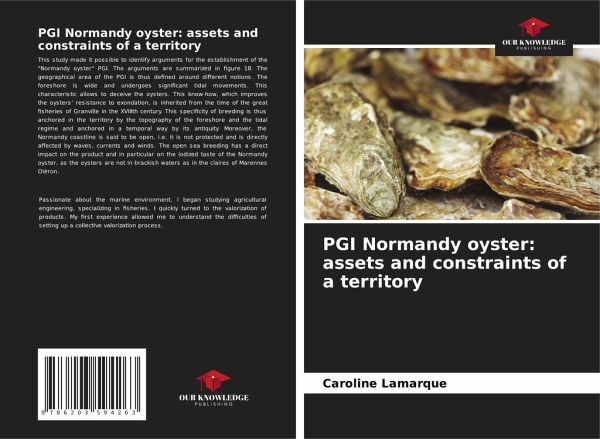
PGI Normandy oyster: assets and constraints of a territory
Versandkostenfrei!
Versandfertig in 6-10 Tagen
27,99 €
inkl. MwSt.

PAYBACK Punkte
14 °P sammeln!
This study made it possible to identify arguments for the establishment of the "Normandy oyster" PGI. The arguments are summarized in figure 18. The geographical area of the PGI is thus defined around different notions. The foreshore is wide and undergoes significant tidal movements. This characteristic allows to deceive the oysters. This know-how, which improves the oysters' resistance to exondation, is inherited from the time of the great fisheries of Granville in the XVIIIth century. This specificity of breeding is thus anchored in the territory by the topography of the foreshore and the ti...
This study made it possible to identify arguments for the establishment of the "Normandy oyster" PGI. The arguments are summarized in figure 18. The geographical area of the PGI is thus defined around different notions. The foreshore is wide and undergoes significant tidal movements. This characteristic allows to deceive the oysters. This know-how, which improves the oysters' resistance to exondation, is inherited from the time of the great fisheries of Granville in the XVIIIth century. This specificity of breeding is thus anchored in the territory by the topography of the foreshore and the tidal regime and anchored in a temporal way by its antiquity. Moreover, the Normandy coastline is said to be open, i.e. it is not protected and is directly affected by waves, currents and winds. The open sea breeding has a direct impact on the product and in particular on the iodized taste of the Normandy oyster, as the oysters are not in brackish waters as in the claires of Marennes Oléron.



